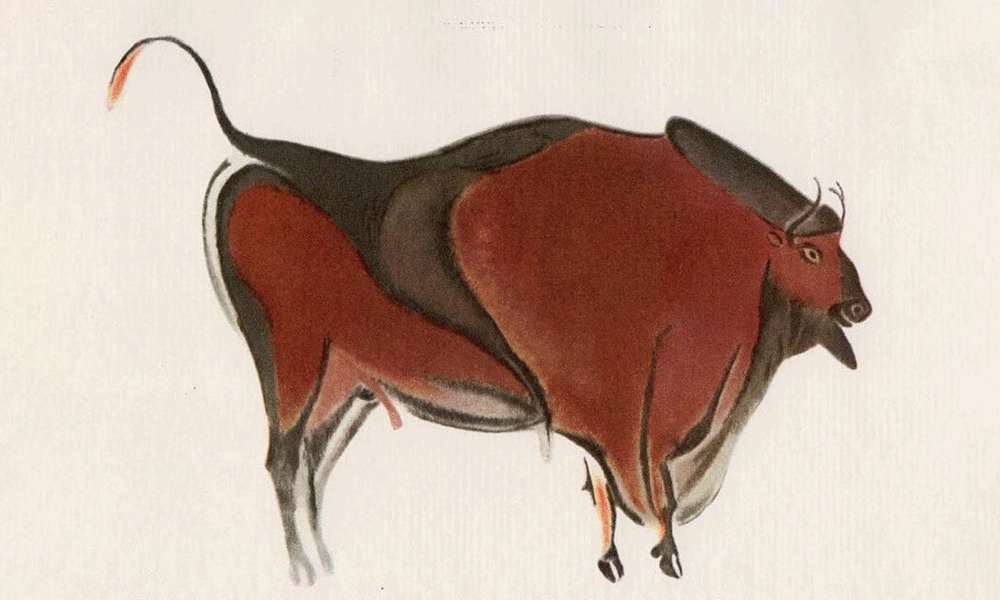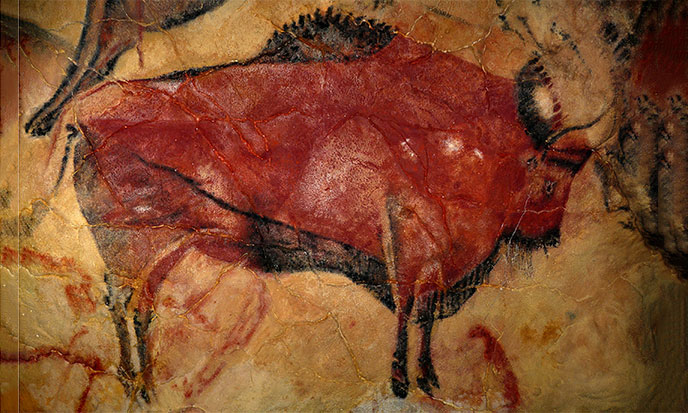
Their vanity has played many tricks on archaeologists, including a very tasty one about prehistory, and more precisely rock paintings, as they never wanted to revise their judgment. Even today, some overcautious incumbents shudder at the mention of its code name, the infamous Altamira case.
Around the world, they are only a few hundred scholars who study prehistory. It is a very close community that bears overwhelming responsibilities. So much so that if a charismatic leader emerges within the group, his theories soon become their ruling ideology for the rest of his life. Unless some other leader, more powerful or more demagogue, comes and steals the show from him. France has long been the only country with painted caves, which gave their prehistorians a monopoly of which they are very proud.
Their discipline has the full support of government; the prehistorians get comfortable grants and have the right of prohibition: they made an arrangement so that over 90% of the painted caves are closed to the public.
Their argument was the protection of pigments. And the conservation of the sites. All this is true. But meanwhile, the total control of visits allow them a total control of new theories. Thus, as the sites themselves, their private domain is surrounded by barbed wire.
Even if you do not subscribe to the conspiracy theory, you can not help but see how it works. In this regard, the Altamira affair is a textbook case. Everything started in 1879, near Santander in Spain, when amateur archaeologist Marcelino Sanz de Sautuola discovered the cave on his land. Sautuola knew well the French caves with their paintings of animals from the Ice Age. When he saw the paintings in his cave, he dated them of the Quaternary.

“Although Sautuola was completely right about the age of the works of art, however, he made three important mistakes when he tried to convince academics. The first was to be Spanish, the second was to have found the cave in Spain, and the third was to have been an amateur archaeologist,” Graham HancockGraham Hancock, Supernatural: Meeting with the Ancient Teachers of Mankind, 2005 wrote.
Even if Sautuola had been an academic, the French prehistorians would have discredited him just because the cave was not in France.
Then began a long ordeal for the poor amateur archaeologist, an ordeal that ceased only when he died, overwhelmed by shame and sorrow, in 1898. For years, the French academics have taken him for an impostor. For years, the most prominent French academics set themselves against the poor Sautuola, with a sordid bad faith. Soon, the Spanish academics also denied him his support, not to be angry with the French prehistorians.
A real smear campaign was waged then against the amateur archaeologist, who probably more than once regretted his amazing discovery. Apart because of misplaced national pride, why did the French prehistorians refuse to give credit to the wonders of Cantabria Cave. Precisely because they were too beautiful.
The paintings of Altamira, much more finely executed than those of Lascaux and Pech-Merle, seemed modern forgeries to them.
![Reproduction de la caverne d'Altamira, By User:MatthiasKabel (Own work) [GFDL (http://www.gnu.org/copyleft/fdl.html), CC-BY-SA-3.0 (http://creativecommons.org/licenses/by-sa/3.0/) or CC BY 2.5 (http://creativecommons.org/licenses/by/2.5)], via Wikimedia Commons - https://commons.wikimedia.org/wiki/File:Reproduction_cave_of_Altamira_02.jpg Reproduction_cave_of_Altamira-688po](https://eden-saga.com/wp-content/uploads/Reproduction_cave_of_Altamira-688po.jpg)
It is true that the Altamira cave paintings show a perfect artistic and technical mastery, beside which our paintings do not measure up. And according to the evolutionary ideas of the time, this cave, even older than ours, could not contain so accomplished original prints. It would have defied all the academics’ ideas on evolution. We can only deplore this kind of attitude among scientists whose vocation is to question themselves and accept nothing for granted.
“If the works of art that were discovered had been primitive, distorted and poorly executed, no one would have considered that they were in discrepancy with the theory of evolution. However, it was noticed that they were refined and finished works, that could be easily compared to contemporary art. So could anyone believe they were designed, using modern techniques, by cave dwellers, some primitive cavemen who had not yet discovered the plow?” (source)Graham Hancock, Supernatural: Meeting with the Ancient Teachers of Mankind
They finally admitted, reluctantly, the authenticity and date of these paintings. They finally recognized, grudgingly, that Sautuola was right.
But the French school of prehistory was very annoyed with these embarrassing masterpieces. Should they consider them as rock art? Sometimes the figures were superimposed to the point that it became clear they have not been plotted in a decorative or artistic purpose. So who painted them? And most importantly, why?
![Bison d'Altamira - Émile Cartailhac [Public domain], via Wikimedia Commons -- https://commons.wikimedia.org/wiki/File:Bisonte_de_Altamira.jpg bisonte-de-altamira-688po](https://eden-saga.com/wp-content/uploads/bisonte-de-altamira-688po.jpg)
Our ancestors clearly had a good reason to make such an effort, other than to spend time in their cave until the end of Ice Age. On this major issue, the academics remained silent. During the years that followed, two popes succeeded one another at the head of the prehistorian Church, ie Breuil and Leroy-Gourhan. Their works have focused on understanding why these prehistoric men had created such works. By dint of silence, this major problem was becoming a taboo. Despite their best efforts, neither of them could offer a valid assumption, whereas they were preventing anyone to offer one.
People agree today that their theories were null and void. As they will perhaps in further centuries about other present theories defended by scholars today, as the real seniority of the Sphinx and the Great Pyramid of Giza, the monumental sculpture of the Olmecs or the Pyramid of Bosnia. The why question remains unanswered anyway. The cave painters were not artists, they were shamans. Breuil suggested that the caves had been designed for religious purposes, and their plans were overlapping more or less. He argued that each room was assigned to a different animal. Since then, we realized it was not.
The structuralist assumptions of his successor Leroy-Gourhan have not led to much either. They produced catalogs and listings, no idea. They are victims of excessive rationalism, while the solution is probably in front of them.
![Cheval de Style III, par Leroi-Gourhan -- By José-Manuel Benito (Own work) [Public domain], via Wikimedia Commons -- https://commons.wikimedia.org/wiki/File:Caballo-Estilo_III_de_Leroi-Gourhan.png Caballo-Estilo_III_de_Leroi-Gourhan-688po](https://eden-saga.com/wp-content/uploads/Caballo-Estilo_III_de_Leroi-Gourhan-688po.jpg)


